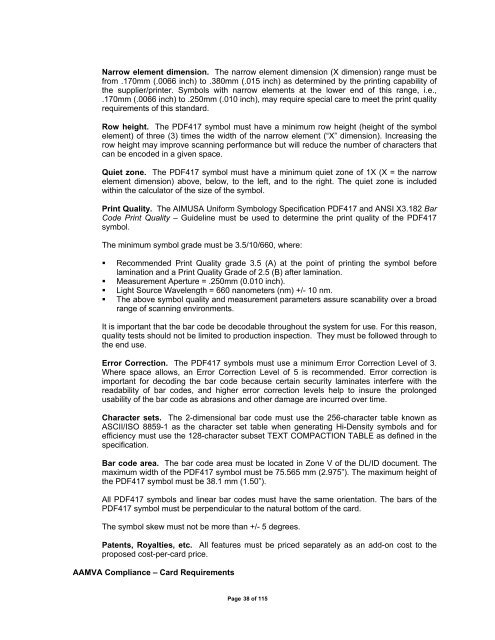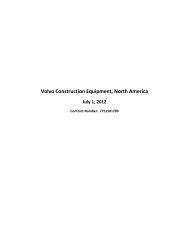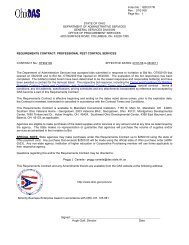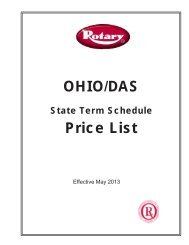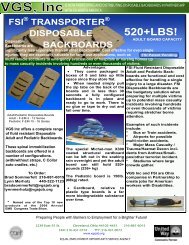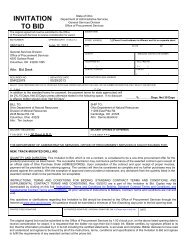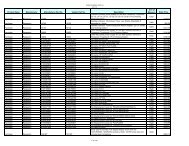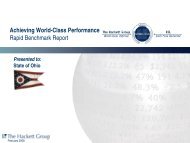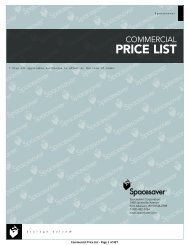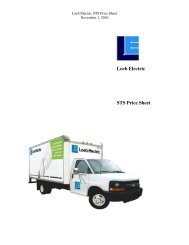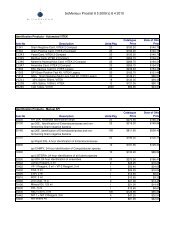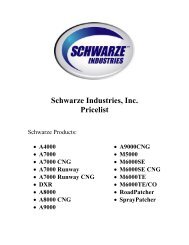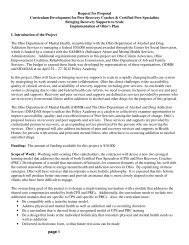REQUEST FOR PROPOSALS RFP NUMBER: 0A1031 DATE ISSUED
REQUEST FOR PROPOSALS RFP NUMBER: 0A1031 DATE ISSUED
REQUEST FOR PROPOSALS RFP NUMBER: 0A1031 DATE ISSUED
You also want an ePaper? Increase the reach of your titles
YUMPU automatically turns print PDFs into web optimized ePapers that Google loves.
Narrow element dimension. The narrow element dimension (X dimension) range must be<br />
from .170mm (.0066 inch) to .380mm (.015 inch) as determined by the printing capability of<br />
the supplier/printer. Symbols with narrow elements at the lower end of this range, i.e.,<br />
.170mm (.0066 inch) to .250mm (.010 inch), may require special care to meet the print quality<br />
requirements of this standard.<br />
Row height. The PDF417 symbol must have a minimum row height (height of the symbol<br />
element) of three (3) times the width of the narrow element (“X” dimension). Increasing the<br />
row height may improve scanning performance but will reduce the number of characters that<br />
can be encoded in a given space.<br />
Quiet zone. The PDF417 symbol must have a minimum quiet zone of 1X (X = the narrow<br />
element dimension) above, below, to the left, and to the right. The quiet zone is included<br />
within the calculator of the size of the symbol.<br />
Print Quality. The AIMUSA Uniform Symbology Specification PDF417 and ANSI X3.182 Bar<br />
Code Print Quality – Guideline must be used to determine the print quality of the PDF417<br />
symbol.<br />
The minimum symbol grade must be 3.5/10/660, where:<br />
Recommended Print Quality grade 3.5 (A) at the point of printing the symbol before<br />
lamination and a Print Quality Grade of 2.5 (B) after lamination.<br />
Measurement Aperture = .250mm (0.010 inch).<br />
Light Source Wavelength = 660 nanometers (nm) +/- 10 nm.<br />
The above symbol quality and measurement parameters assure scanability over a broad<br />
range of scanning environments.<br />
It is important that the bar code be decodable throughout the system for use. For this reason,<br />
quality tests should not be limited to production inspection. They must be followed through to<br />
the end use.<br />
Error Correction. The PDF417 symbols must use a minimum Error Correction Level of 3.<br />
Where space allows, an Error Correction Level of 5 is recommended. Error correction is<br />
important for decoding the bar code because certain security laminates interfere with the<br />
readability of bar codes, and higher error correction levels help to insure the prolonged<br />
usability of the bar code as abrasions and other damage are incurred over time.<br />
Character sets. The 2-dimensional bar code must use the 256-character table known as<br />
ASCII/ISO 8859-1 as the character set table when generating Hi-Density symbols and for<br />
efficiency must use the 128-character subset TEXT COMPACTION TABLE as defined in the<br />
specification.<br />
Bar code area. The bar code area must be located in Zone V of the DL/ID document. The<br />
maximum width of the PDF417 symbol must be 75.565 mm (2.975”). The maximum height of<br />
the PDF417 symbol must be 38.1 mm (1.50”).<br />
All PDF417 symbols and linear bar codes must have the same orientation. The bars of the<br />
PDF417 symbol must be perpendicular to the natural bottom of the card.<br />
The symbol skew must not be more than +/- 5 degrees.<br />
Patents, Royalties, etc. All features must be priced separately as an add-on cost to the<br />
proposed cost-per-card price.<br />
AAMVA Compliance – Card Requirements<br />
Page 38 of 115


